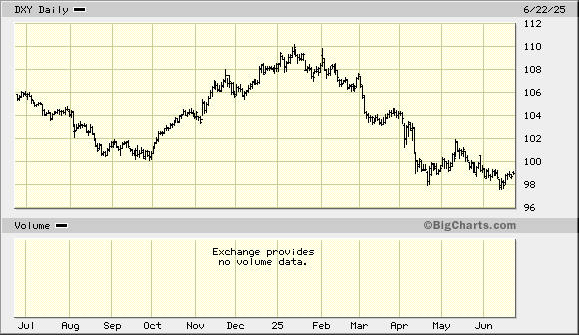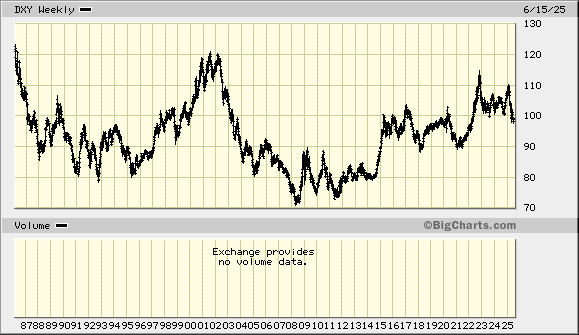Weaker USD – Or Stronger?
The U.S. dollar receives its fair share of attention in the financial press. The “impending collapse” of the dollar and similar inflamed phrases dominate the headlines. Other recent mentions include “plunging U.S. dollar” and “U.S. dollar breakdown.” The concern – and alarm – seem well-deserved.
Since January the U.S. dollar has declined by 12%. At least, that is how the dollar’s decline is described by financial writers and others. There is a context for that statement, though, which needs to be clarified and understood.
Statements that reference percentage declines of the U.S. dollar usually refer to relative weakness (or strength) of the U.S. dollar compared to other currencies. The U.S. dollar index, DXY, measures the “value” of the U.S. dollar versus a basket of other currencies on foreign exchange markets. The fluctuating price for DXY is a “live” measure of the U.S. dollar’s exchange rates with various other currencies (Euro, Japanese yen, Swiss franc, British pound, Swedish krona, & Canadian dollar).
CHARTS
Below is a chart (source)of DXY for the past year…

Looking at the chart, the 12% decline in DXY since January is alarmingly steep. Additionally significant is the breakdown below its previous lows from last September.
Now, let’s look at another chart of DXY. This one covers the past forty years…

The severity of the current decline seems lessened and is contained within the scope of a broader, long-term increase in DXY dating back to 2008.
OBSERVATIONS AND QUESTIONS
The overwheming negativity surrounding the U.S. dollar needs to be considered in broader context if the U.S. dollar index is the primary point of reference for such statements. It ususally is, hence…
The past three years (2022-25) show relative dollar strength/weakness at a higher level (100-110) than at any other time in the past forty years. The price action between 90 and 100 lasted for seven years and provides possible substantial support. If downside action for the U.S. dollar versus other currencies continues, the DXY index could drop to 90 and still find strong technical support.
Will the current weakness in U.S. dollar exchange rates, which is reflected in a declining DXY, continue unabated? Or, is the current weakness part of a consolidation phase for a U.S. dollar which has been strengthening versus its peers (other currencies) for almost two decades?
CAVEATS AND CONCLUSION
The U.S. dollar index (DXY) tells us only how the U.S. dollar is currently faring when compared to the basket of other currencies in the index.
The U.S. dollar (as do all fiat currencies) continues to lose purchasing power. The loss of purchasing power results from inflation of the supply of money and credit by the Federal Reserve.
The U.S. dollar is forever growing ‘weaker’ due to its loss of purchasing power. That is true even if traders buy dollars on foreign exchange markets; and even if the dollar index (DXY) rallies strongly.
That being said, there are periods when the dollar regains some of its lost favor. Sometimes dollar ‘favor’ turns to dollar ‘fever’. We could be on the verge of an upside dollar surprise. (also see Interest Rates Could Go Much Higher)
Kelsey Williams is the author of two books: INFLATION, WHAT IT IS, WHAT IT ISN’T, AND WHO’S RESPONSIBLE FOR IT and ALL HAIL THE FED
********















